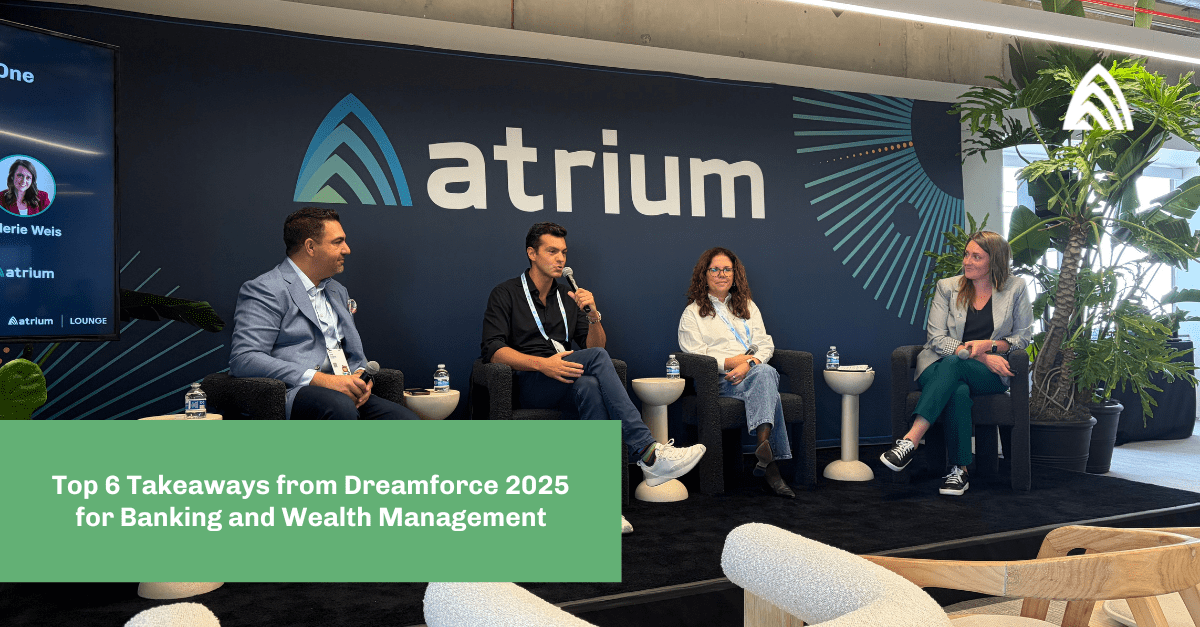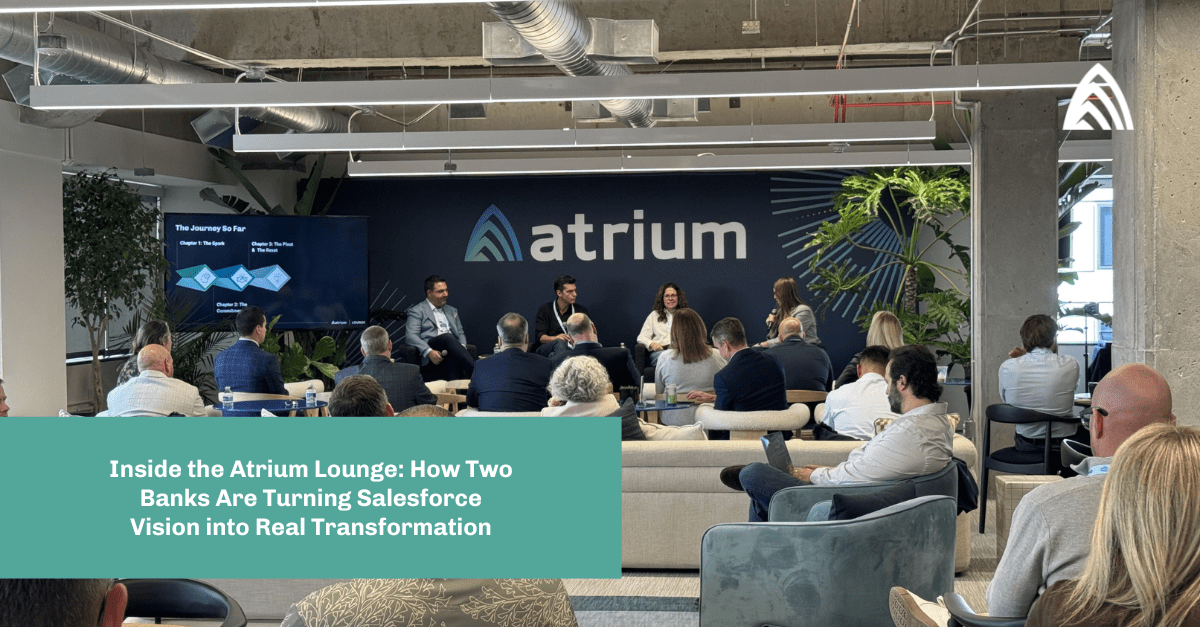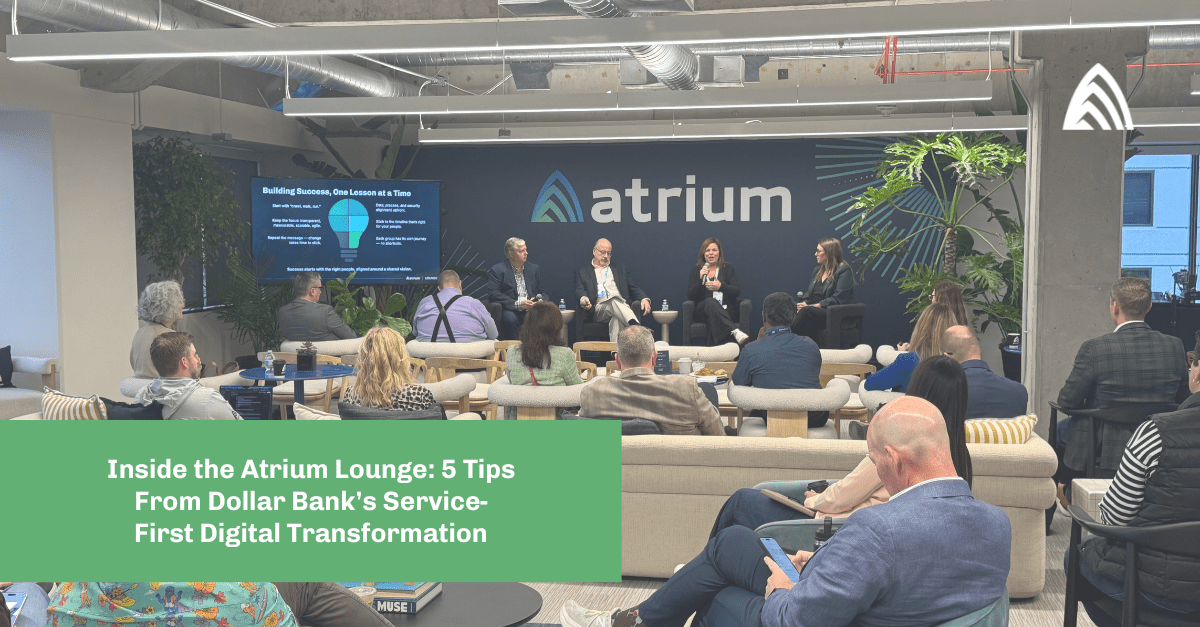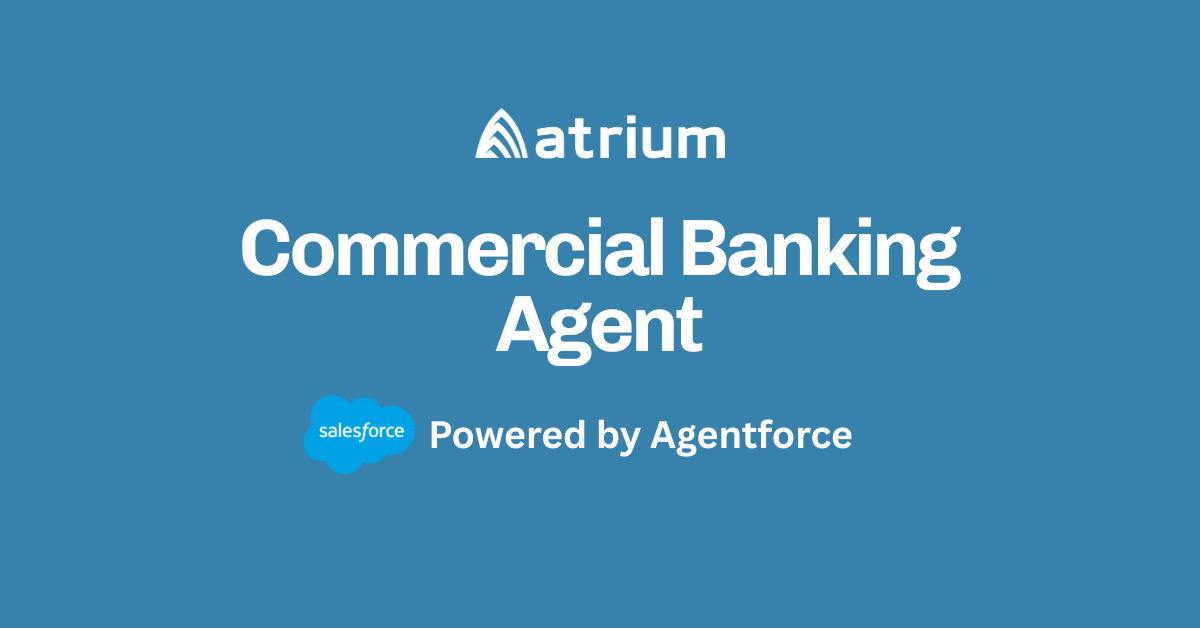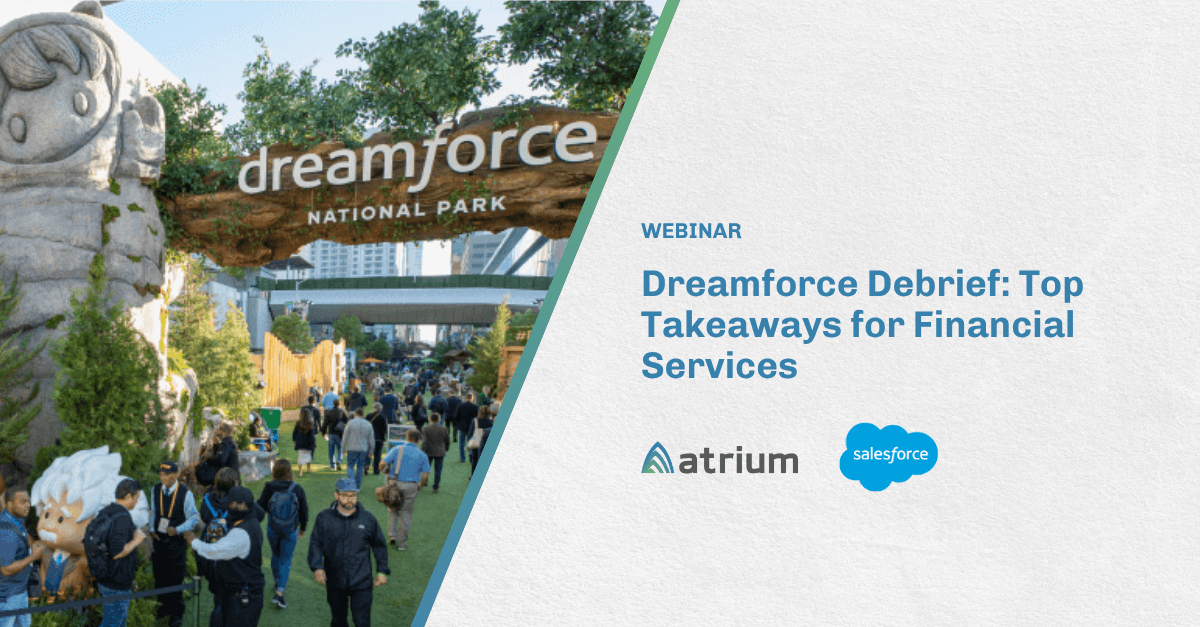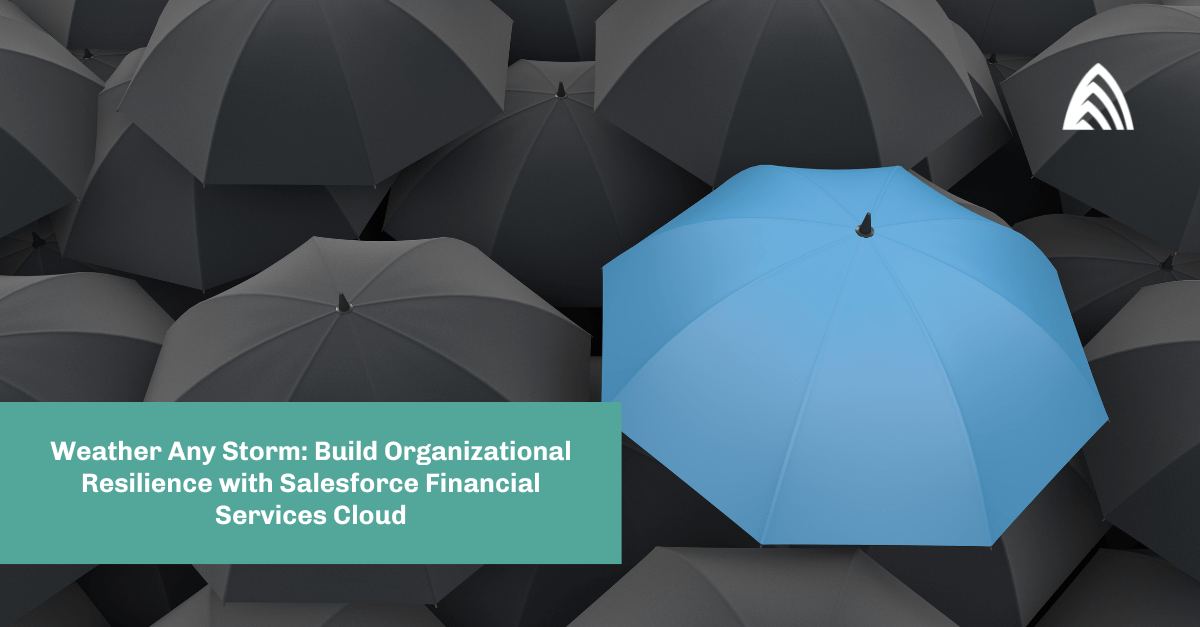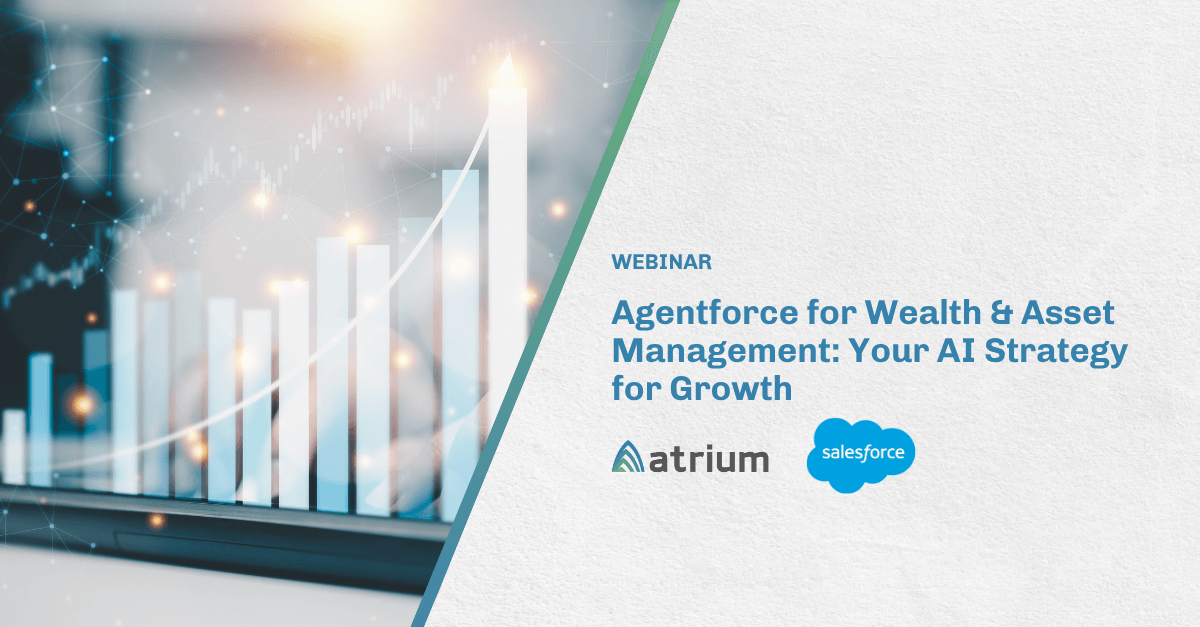I didn’t make it to the Dreamforce keynotes in person this year, but I watched them all on demand on the flight home with my notebook in hand.
And honestly, the themes that came through on screen echoed every conversation I’d had all week in our lounge. Last year was about imagination. The art of the possible. AI is an idea that would one day transform how we work. This year felt different. The energy at Dreamforce wasn’t about what could happen but about what is happening. There wasn’t a single person who said, “I’m not thinking about AI.”
Some firms have started and are fine-tuning as they prepare to move to production. Others are iterating on early pilots or just getting ready to take their first steps. But no one is standing still. Everyone is doing something.
For financial services, the message couldn’t be clearer: AI cannot be a side project anymore. It’s the foundation for what comes next. So, it’s time to get started.
1. From AI hype to making things happen
The hype cycle is starting to balance out, and that’s a good thing. Use cases are becoming more grounded in reality and are being focused on what’s possible now rather than chasing the most complex ideas first. Those who start small, learn fast, and iterate are the ones pulling ahead. And as the solution matures, those with a foundation of using simple solutions will outperform those who waited.
Across financial services, companies are moving from testing AI to scaling it. The conversation has shifted from “how do we start” to “how do we go faster, safely, and with trust.”
2. The agentic enterprise becomes real
Salesforce described the agentic enterprise as the next evolution after our progression through cloud → mobile → social → predictive. Now we’re starting to see what that means in practice.
Agents today aren’t replacing people or managing entire workflows. They’re showing up inside daily work through summarizing client notes, surfacing insights, and helping employees take the next best action.
In financial services, that might look like:
- Advisors using AI copilots to prepare pre-meeting summaries and identify potential client needs or speaking notes as they leave a client meeting, with agents updating the opportunity and creating follow-up reminders.
- Relationship managers getting real-time insights from Data Cloud in Slack, showing which clients are due for outreach and providing key summaries.
- Service teams using guided responses that blend AI-generated suggestions with compliance-approved messaging to create a better experience and drive more first-time call resolution.
It’s early, but the shift is clear. The agentic enterprise isn’t a far-future vision (it’s starting now), with small, useful steps that let people and AI work together more naturally. The takeaway: AI is no longer a standalone tool. It’s a central part of how work gets done.
3. Data 360 takes center stage
If you don’t get your data right, you won’t get AI right. Benioff’s point hit especially close to home for financial institutions that are often dealing with massive volumes of disparate and unstructured data.
Salesforce reintroduced Salesforce Data Cloud as Data 360, positioning it as the intelligence layer of the agentic enterprise. It’s where context, compliance, and connectivity come together to make AI work the way it should.
For banks and wealth firms, the value comes from:
- A unified, real-time view of every customer and household.
- Built-in governance that keeps insights compliant and explainable.
- Context-rich data that turns AI from guesswork into guidance.
Data is no longer a byproduct of your systems. It’s the foundation for how intelligent experiences are built and trusted.
Best practice is to harmonize and segment in Data 360 and activate that data across multiple channels. No more point-to-point connections or redundant steps to activate data. Do it once, then use it many times — in Marketing Cloud for personalized engagement, in Financial Services Cloud to enhance client records, or in targeted call-down or voice experiences.
The opportunity is clear: build your data right once, and make every interaction smarter and more relevant in real time.
4. Salesforce and OpenAI raise the bar
Dreamforce’s biggest announcement was the expanded partnership between Salesforce and OpenAI, connecting Agentforce 360 with GPT-5 to bring AI directly into the flow of work.
For financial institutions, this partnership is about accessibility. AI is no longer something you have to log into, but rather it’s something that comes to you. With Agentforce and OpenAI working together, employees can ask questions, surface insights, and act on data wherever they already are.
A relationship manager can check client updates through ChatGPT without opening a dashboard. A service agent can get a summary or recommendation directly in Slack. A wealth advisor can generate planning notes or next steps right inside Salesforce. It’s the same data, the same trusted context from Data 360, just delivered in a more natural and conversational way.
The enterprise is becoming truly connected and not just system to system, but person to system. Work is turning conversational, and insights are available in the moment of need. For banks and wealth firms, that means faster decisions, more proactive client service, and a direct line between intelligence and action.
5. Trust and governance lead the way
Financial institutions can’t afford to treat explainability as optional. Regulators are asking harder questions: What model are you using? How is it trained? How is data masked and audited? Who reviews outputs before decisions are made? No one wants to be the example that gets it wrong.
Salesforce responded by embedding governance, observability, and transparency into Agentforce 360 and Data 360. The new observability layer allows firms to trace AI actions end-to-end, view which model was used, and apply controls before agents act.
Model flexibility also means customers can bring their own LLMs while maintaining visibility, security, and compliance. With these improvements, Data 360 allows Agentforce Voice to extend the capabilities of agentic AI beyond text-based inputs and outputs to support natural, contextual conversations delivered in a more human way.
That combination of data, observability, and enhanced engagement matters. It turns “trust” from a promise into an actual system of record for how AI operates.
For banks and wealth firms, this is a critical shift. It gives compliance and risk teams the visibility they need to approve AI use cases with confidence, and it allows innovation to move forward without sacrificing safety.
The firms seeing success are those treating trust as architecture, not aspiration. Now, the platform itself is helping make that possible.
6. Humans and agents, better together
The theme throughout Dreamforce was partnership, not replacement. People and AI are working together to deliver better outcomes, faster, while keeping the right guardrails in place for when AI takes an unexpected turn.
As Agentforce pitchman, Matthew McConaughey, discussed in a recent video for social media, AI doesn’t feel. AI doesn’t care. But people do. That is what sets us apart.
We don’t need to build agents that think like us. We need agents that enable human growth. AI can demonstrate empathy, but it doesn’t truly connect the way humans connect. The goal is to build AI that elevates people and takes the busy work off their plates so teams can think deeper, act faster, and connect more meaningfully.
Together, humans and agents move faster, serve smarter, and strengthen trust.
Success will belong to the firms that align data, trust, and people
For banking and wealth management, moving into this new era isn’t about chasing the next big thing. It’s about building on strong and secure data foundations and enabling our people to shine.
We know this new world can sometimes feel overwhelming. The good news? At Atrium, AI isn’t new to us. It’s who we are. We were built on the foundation of AI and data-driven transformation.
As Salesforce’s trusted partner for the agentic era, we help financial institutions turn possibility into performance, identifying the right use cases, aligning data and governance, and designing the next generation of intelligent experiences.
If you’re ready to explore what the agentic enterprise could mean for your organization, let’s start the conversation. Reach out to our team to discover your best use cases and start planning your AI journey.
